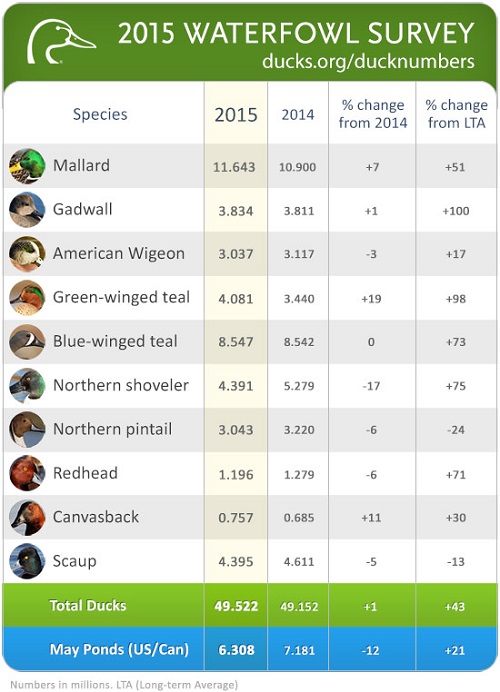
Drier conditions on the prairies demonstrate importance of Boreal Forest habitats. The 2015 Trends in Duck Breeding Populations report released by the U.S. Fish and Wildlife Service (USFWS) indicates another strong year for waterfowl populations. The report is based on surveys conducted in May and early June by the USFWS and Canadian Wildlife Service in partnership with state and provincial agencies and private conservation organizations. Overall duck numbers were statistically similar to last year and remain high. Total populations were estimated at 49.5 million breeding ducks in the traditional survey area. This estimate represents a 1-percent increase from last year’s estimate of 49.2 million birds, and is 43 percent higher than the 1955-2014 average.

“We are fortunate to see continued high overall duck populations in North America’s breeding areas this year,” said DU CEO Dale Hall. “Though conditions were dry in some important habitats, we had large numbers of birds returning this spring and good conditions in the Boreal Forest and other areas of Canada. It looks like some typical prairie nesters skipped over the U.S. prairies and took advantage of good conditions farther north. This is an important reminder about the vital need for maintaining abundant and high-quality habitat across the continent. The Boreal Forest, especially, can provide important habitat when the prairies are dry. But the Boreal is under increasing threats from resource extraction.”
Click a species on the right side of the page for more details.
